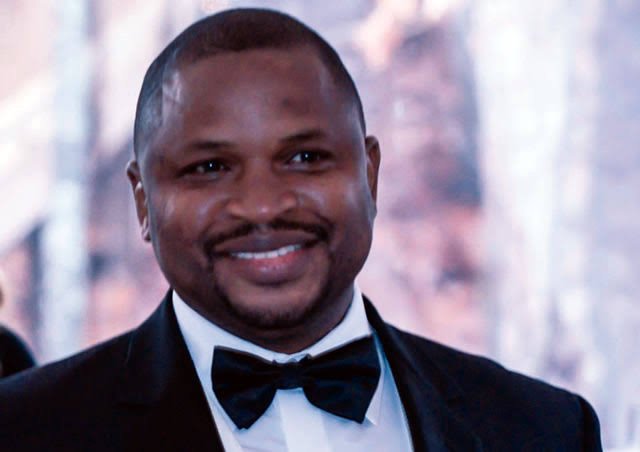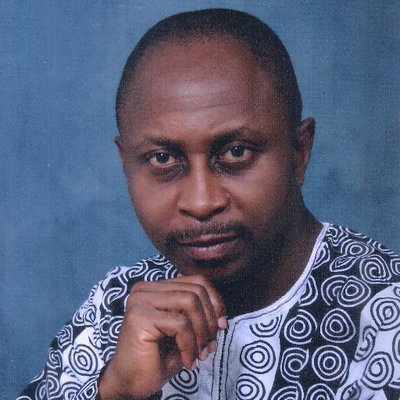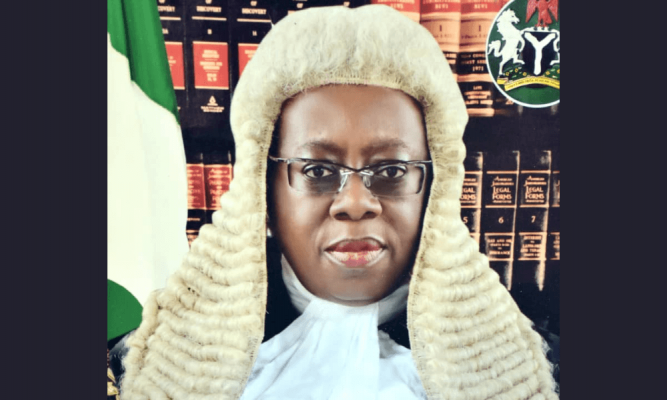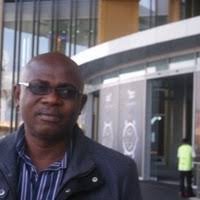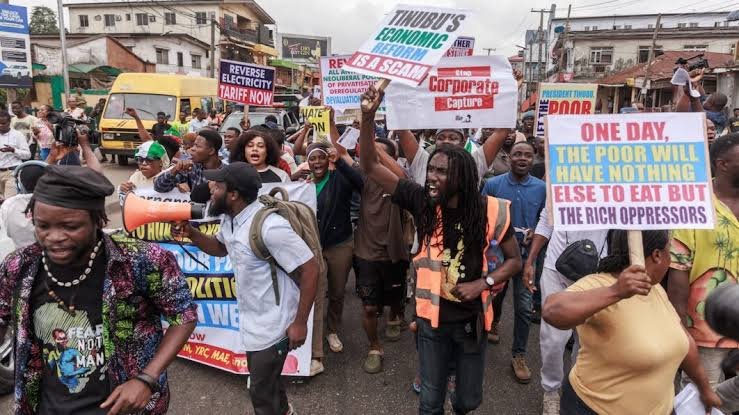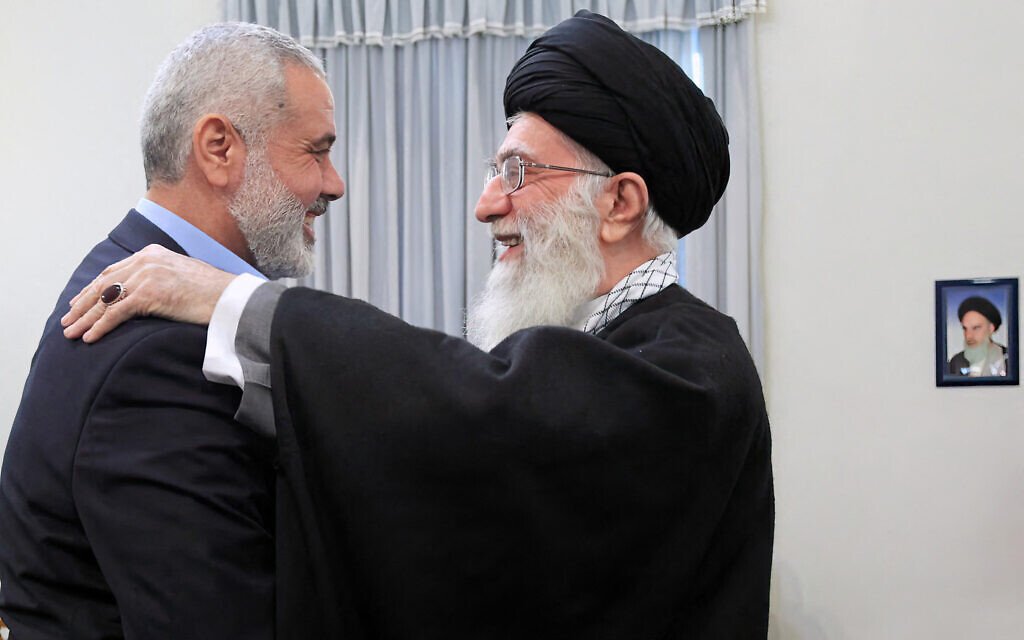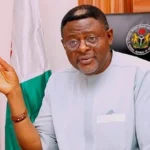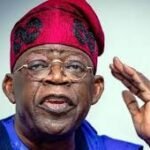By
Emmanuel Gandu
HIGHLIGHTS
• Introduction
• History
• First generation universities
• Second generation universities
• Third generation
• State and private universities
• Proliferation of universities
• NAUT
• ASUU
• NUC
• JAMB
• Agitation for better funding /feud with all Nigerian past governments
• ASUU key demands
• Nigeria’s education budget allocations 2009 – 2024
• Compare Nigeria with other African country’s education budgets 1999 – 2024
• ASUU strikes 1999 – 2024
• Past ASUU Presidents
• Effects of ASUU strikes
• Falling standard of education
• Nigerian universities ranking in Africa – 2005, 2007, 2023
• Nigerian universities ranking in the world – 2005, 2007, 2023
INTRODUCTION
Educational systems have been developed and transformed with exceptional speed in the world. Since from 1945, the human environment have been transformed through the influence of education and several revolutions thereby affecting positively the sciences and technologies, economies and political relations, demographies and social structures.

However, Nigeria’s education, though making inroads, have not been fast enough in facility, content and quality of products to catch up with the pace of other nations.
This gap is central to the crisis of education in Nigeria, and this is part of what this attempt seeks to highlight in order to bring the issues bothering around the crisis to the fore.
For example, it is argued in public fora that the working conditions of academic staff of Univesities, Polytechnics, and Colleges of Education have deteriorated over the years, with the over – politicization of most universities by successive Nigerian governments, and the subsequent inability to plan effectively for the development of such a critical sector.
One may therefore be tempted to ask the following hypothetical questions :
1. What are the working and living conditions of Nigerian University lecturers ?
2. To what extent have the so called “financial difficulties” of the Nigerian polity affected the funding of institutions of higher education in the country ?
3. How effective have successive governments addressed the problems of education at the Ivory Tower ?
4. What are the effects of academic staff strikes on Nigeria’s educational system.
5. What is the role of the academic staff members in ameliorating, mitigating or agravating the obvious bottlenecks ?
While institutions of higher learning are faced with the challenges of meeting the human resources demands of developing countries, the academic staff have taken these challenges head on in their quest towards the provision of quality education to meet Nigeria’s developmental challenges.
This discourse will therefore attempt an analysis of the extent, level, and impact of university education in Nigeria vis a vis the role of university academic staff and government contribution to the seemingly lack of growth of the sector as compared with other nations of the world.
To be able to achieve this objective, the following key areas that have likely contributed positively or otherwise to the imbroglio will be top on the discourse :
1. Working conditions.
2. Funding.
3. Strikes.
4. Remuneration.
5. University autonomy.
6. Rosty academic staff
7. Falling standard of education.
8. Half baked graduates
9. Brain drain
10. Proliferation of universities.
11. Private universities
12. The roles of NUC and JAMB
13. Corruption
14. Historical perspectives
15. Recommendation on the way forward.
UNIVERSITY EDUCATION IN NIGERIA : THE HISTORY
The development of higher education in Nigeria took off at the onset of the world education crisis of the 1950’s. Prior to that period, there was no university in Nigeria until 1948 when the University College Ibadan was established as a campus of the University of London.
The establishment of this London campus in Ibadan was as a result of the 1930 Hussey Commission’s recommendation for the setting up of higher education in Nigeria for the purposes of turning out “well qualified assistants in medical, engineering, and other vocations as well as teachers of higher middle schools.” The British colonial authorities really had the Interests of Great Britain at heart in constituting this Hussey commission.
Since higher education for Nigeria was motivated by British rather than Nigerian interests, the issues of recruitment and welfare of indigenous academic staff were secondary concerns to the British colonial authorities.
This was the situation at the Yaba College of Technology, the first institution of higher learning in Nigeria established in 1947.
Another commission, the Eliot was constituted to build on the recommendations of the Hussey commission. It propposed the establishment of univesities in Nigeria, Ghana, and the reconstitution of Fourah Bay College in Sierra Leone.
Discussing this situation further, Fafunwa (1974) reports that following the rapid increase in primary and secondary school enrollment, especially in the south, and on account of Nigeria’s high – and medium – level manpower needs, it was considered necessary in the late 1950’s to examine the need for more institutions in the country. It was for this reason that the Ashby commission was appointed by the federal government in April 1959.
The commission’s report recommended the establishment of three more Univesities – one in Lagos (University of Lagos), one in Zaria (Ahmadu Bello University), and one in Nsukka (University of Nigeria), in addition to the University College Ibadan which was to be developed into a full fledged university.
The University of Ife (now Obafemi Awolowo University) also came on board at this period.
The government accepted the report in 1960, and all these institutions developed fast, and by 1963, Nigeria had five full – fledged universities.
They are the first generation of univesities in Nigeria.
By 1962 the National Univesities Commission (NUC) was established when government, considering the Nigerian university sector large enough, rapidly expanding, and following the recommendation of the Ashby commission felt it necessary for a commission like the NUC to supervise, regulate higher education in Nigeria, and adhere to the objectives of setting up the univesities.
The second generation of Nigerian univesities came between 1970 and 1975. They are :
1. University of Benin – 1970
2. University of Jos – 1975
3. University of Maiduguri – 1975
4. University of Calabar – 1975
5. University of Ilorin -1975
6. Bayero University Kano – 1975
7. Usman Danfodio University Sokoto – 1975
8. University of Port Harcourt – 1975
The rapid response to the people’s yearnings for university education led to government establishing more institutions of higher learning across the country which were refered to as the third generstion of universities. Some of these include :
• Federal University of Technology Owerri.
• University of Agriculture Makurdi.
• Federal University of Technology Yola.
• Federal University of Technology Akure.
• Federal University of Technology Bauchi.
• Federal University Minna.
• Federal University of Agriculture Abeokuta.
Since then, Nigeria had continued with this trajectory of establishing more univesities in as many states as funds could allow and more so, for political exigencies.
This rapid expansion of university education is evidently supported by the facts on ground.
While there were only 3,671 students in the five universities during the 1962 – 1963 academic year, the number shot up to 14,468 by the 1970 – 1971 academic year.
This growth became obvious in both continuous increase in number of institutions and in candidates seeking admission, hence the need to put in place a central admission body became imperative.
By 1978, the Joint Admission and Matriculation Board (JAMB) was established. The legal instrument setting up JAMB was promulgated by the Act No. 2 of 1978 on 13 February 1978 by the Federal Military government of General Ibrahim Babangida. JAMB was mandated to conduct Matriculation Examination for entry into universities, Polytechnics and Colleges of Education in Nigeria.
With JAMB as a central admission body in place, each of the instructions no longer had unfilled admission space/quarter, hence the increase in students population, facilities, courses, faculties, and teaching staff.
For example, Ahmadu Bello University (ABU) founded in October 1962 with the declared objective of bridging the educational gap between the North and South experienced tremendous growth.
ABU Zaria started with 425 students, 142 academic staff, and other administrative personnel.
At inception, the university had 17 departments, and by 1975 it had become one of the largest university in Africa with 11 faculties made up of 90 departments, 5 research centres, institutes, a teaching hospital, Colleges, a student population of over 15,000, and more than 2,000 academic staff.
By 1987, ABU had bult 1,115 housing units for staff accommodation, a water dam for portable water, and several other ambitious projects.
It’s a beautiful fact that the ABU scenario was to be replicated in most of the ever increasing univesities in Nigeria.
By 2022, and according to the NUC bulletin for that year, Nigeria had a total of 219 universities.
As at June 2023 Nigeria had a total of 264 universities.
Interestingly, as at Q2 of 2024, Nigeria had 62 federal universities, 63 state universities, and 149 private universities bringing the total number of universities in Nigeria to 274.
However, inspite of the total 274 federal, state, and private universities in the country, Nigeria still falls short of providing adequate admission placement to the ever increasing number of candidates seeking admission.
According to the Federal Ministry of Education through the JAMB Registrar Prof. Ishak Oloyede, more than 1.9 million candidates were registered to participate in the 2024 Unified Tertiary Matriculation Examination (UTME).
However, he quickly added that out of this 1.9 million candidates, only 20% will be offered admission into the Univesities, Polytechnics and Colleges of Education across the country. This is due to inadequate university carrying capacity, and poor academic performance on the part of the candidates.
This therefore explains the reasons for the proliferation of universities in Nigeria.
ESTABLISHMENT OF PRIVATE UNIVERSITIES IN NIGERIA
The establishment of private universities had actually begun from the 1980’s but the Buhari/Idiagbon military government proscribed those already established in a decree. However, persistent concern and reality of the exigencies point to the need for additional universities in order to cope with the increasing number of prospective applicants for which the existing universities had no carrying capacity. This situation informed the General Ibrahim Babangida administration to constitute the Longe Commission in 1991 to study the viability of establishing privately owned universities in Nigeria. The recommendation arising from, led to, in 1999, the liberalization of ownership of universities thereby attracting individuals, corporate groups, and religious organizations to establish private universities.
Interestingly, the trio of :
1. Babcock University
2. Madonna University
3. Igbenedion University
were the first private universities to be issued operating licence in 1999.
These three pioneer private universities were joined by :
4. Bowen – 2001
5. Covenant – 2002
6. Pan African – 2002
7. Ben Idahosa – 2002
Since 1999, the establishment of private universities had been as continuous as an unending exercise where the NUC grants approval.
According to NUC bulletin of June 2022, there were a total of one hundred and eleven (111) private universities in Nigeria, as against the 49 federal, and 59 state owned, bringing the total number of Nigerian universities to 219.
As at third quarter (Q3) of 2024, Nigeria’s total number of private universities went up to 149.
_STRUGGLE FOR BETTER WORKING CONDITIONS BY ACADEMIC STAFF : A HISTORICAL JOURNEY_
*Introduction*
The crisis in the Nigerian educational system predates contemporary development.
The 1930 British colonial initiated Hussey commission recommended that higher education in Nigeria be aimed at turning out “well qualified assistants” in medical, engineering, and teaching. They had their interest at heart, and went ahead to recruit their own nationals as teachers with better pay than the indigenous academic staff for the Nigerian Universities.
According to Babs Fafunwa, when Nigerian Universities began recruitment of academic staff, they offered attractive inducement to the expatriate staff in order to retain them.
Regrettably, these inducements disappeared from being extended to the Nigerian counterparts, as it was an illusion to expect the same treatment.
Therefore, comparing Nigerian working conditions like remuneration, research materials, laboratory and library facilities, funding, autonomy, and others of universities in developed countries is a legitimate reason.
Other opinion have suggested otherwise, perhaps unrealistic for economic reasons.
However, it should be noted that Nigerian University lecturers have never demanded equal salaries and other working conditions, if not for the purposes of quality and standards, with their American, British, German or French counterparts. All they have requested is a relative scenario with other African countries.
Given the peculiar situation of Nigeria where the emoluments of academic and administrative staff represent more than 90% of the annual budget approved for each of the universities, virtually nothing is left for the provision of basic facilities for teaching, learning and research.
Nigerian academic staff therefore argue that if the country was able to bear the high cost of paying expatriate lecturers, continue with the proliferation of universities, spend highly on other sectors, then, they see no reason why the government should not adequately fund education.
Interestingly, the broad parameters of the crisis in Nigerian Universities can therefore be defined within the context of under-development, underfunding, poor planning, government marginalization of the education sector, over politicization, corruption and other stuff.
It’s no gainsaying that the working conditions in the Nigerian university system have deteriorated significantly over the years largely due to government inability to place priority on education like done in other sectors.
Unfortunately, these situations are the genesis of the age long struggle and agitation for better working conditions in Nigerian universities from 1948 – 2024.
*The agitations from 1948 – 2024*
(1) Ibadan 1951 protest :
With their discriminatory working conditions, the colonial administration did not make matters any better. The policy of equal pay for equal work did not apply here as the expatriate staff were paid far higher than their Nigerian counterparts. This situation gave rise to agitation for a better pay for Nigerian university teachers.
The first open agitation for better working conditions in the Nigerian university system begun in 1948 eventually occurred in Ibadan in 1951.
This protests led to a revision of the salaries paid to Nigerian university teachers.
(2) University of Lagos 1967 and 1970 reneged agreement :
Lecturers of the University of Lagos through the Association of University Teachers (AUT) proposed a new remuneration scale package which was agreed to in its entirety by the university council.
Unfortunately, the university administration reneged on the agreement when it could not obtain financial backing from the government for the implementation of the new salary package. As a result, more lecturers left the services of the universities in 1971.
At that time, a Graduate Assistant earned a salary of £1,000 compared to his counterpart in the civil service who earned £800. Those in the private sector like the industries and banks, however, earned more. Younger graduates were, therefore, more attracted to these high paying sectors than the university.
Babs Fafunwa in his lamentation of the situation volunteered this insight : “University salaries have not been revised upwards since 1959. They have become so uncompetitive that the University of Lagos, for example, cannot now attract even the best of its own annual graduates.”
(3) Establishment in 1962 of the National Universities Commission (NUC) :
In view of the important role of universities in the country, the federal government, following on the recommendation of the Ashby commission, established the NUC in 1962 with the following objectives :
– To review and estimate the financial needs of the five (5) universities both annually and quinquennially.
– To share the funds made available by the federal government on an equitable basis.
– To coordinate the various development programmes of the five universities.
– To ensure that goals of the universities and the man power needs of the country are co – terminal as far as practicable without violating the basic autonomy of the universities in academic matters.
University lecturers had no qualms with the mandate of the NUC, however, there was some reservations.
This is the grause of the lecturers :
At inception the NUC was composed of eleven (11) members, among whom only the secretary and two others were from any of the Universities.
With this composition, the university lecturers feared that the NUC would not only be unable to solve their problems, but could even constitute a stumbling block between the universities and the federal government. It became another source of agitation, as this was a strong point of protest and contention until the federal government reversed, amended, and accommodated the views of the academic staff of universities in the document of operation of the NUC.
(4) 1973 AUT clash with General Yakubu Gowon administration :
In 1973, the Association of University Teachers (AUT) presented to the Gowon military government a number of demands aimed at improving both the working conditions of its members, and revitalizing the university system.
To show their seriousness, the National Executive Committee (EXCO) of the AUT threatened the Gowon administration with a strike action to back up their demands. However, in a swift reaction to the move by the lecturers, the Gowon administration refused to grant the demands, asked lecturers to vacate university houses they were not prepared to apologize to the government, and withdraw their threat of strike action.
As a result, the lecturers had to give up, and resumed work immediately.
Many senior academics, realizing their vulnerability resigned for greener pastures.
(5) Murtala Muhammed’s regime face off with university lecturers :
The sour relationship that existed between the Gowon administration and university lecturers had not abated when the Murtala regime, as short as it was, engaged the lecturers in bouts of arm-twisting that further agravated the already bad situation.
The 1975 purge that was supposed to sanitize the public service, but which turned out to be witch – hunting in most instances, did not spare many senior academic staff including vice chancellors of Ahmadu Bello and Ibadan Universities. Harassed and intimidated, the lecturers who were spared were unable to summon enough courage to face the Murtala regime while it lasted.
(6) University lecturers/students face off with Obasanjo regime (1976 – 1979) :
Suffice it to say that the relationship between lecturers/students on one hand and subsequent administrations like the the Obasanjo’s was anything but cordial. General Obasanjo attempted to make students pay tuition fees in a bit to generate funds for the universities.
This move led to serious crisis and strikes which eventually resulted in the brutal killing by security forces of students in many campuses across the country.
This sad episode set the university lecturers and the Obasanjo government on collision course, especially bothering on strikes for better working conditions.
(7) ASUU face off with the trio of Shagari, Buhari and Babangida administrations :
Regretably, the civilian administration of Alhaji Shehu Shagari did not lend a listening ear to the demands of University lecturers. This was evident in the long period of strikes embarked upon by ASUU as a result of the collapse of series of negotiations with government which only led to empty promises.
The Generals Muhammadu Buhari and Ibrahim Babangida military juntas that succeeded each other did not do any better in meeting the ASUU demands.
While Buhari was very blunt and brutal in approach, Babangida was diplomatically cunning and deceptive in dealing with ASUU demands. For example, both the ASUU academic staff and medical doctors under the umbrella of the Nigerian Medical Association (NMA) who went on strike during the Buhari regime were summarily dismised from their jobs. In the case of the Babangida Administration, the long ASUU strikes eventually culminated in the signing of agreements for better conditions of service and improved funding. However, this agreements had hardly been signed when Babangida’s Minister of Education Proffessor Nwabueze declared that the already signed agreement was not legally binding on government.
As a consequence of this high rate of inconsistencies, insincerity, and other series of reneged agreements backed by inadequate funding which has been a characteristic feature of government – ASUU relationship, there was mass exodus of academic staff from Nigerian Universities to greener pastures.
Consequently, this alarming rate of exodus/departure forced the Babangida administration to set up the Presidential Commission on “Brain Drain” in 1987. This commission report prompted the setting up of the Longe Committee. The Longe Committee’s recommendations were submitted to General Babangida in 1991, thereby leading to increase in salaries and allowances of academic staff in Nigerian Universiries and other institutions of higher learning.
While some respite was on the horizon, lamentably however, the twin imbroglio of funding and poor condition of service remained the bane of the Nigerian University System, with incessant strikes crippling scholarship at the Ivory Tower.
For instance, while the NUC recommended to the Shehu Shagari administration the payment of 82.3% of the budgetary requirements of the universities in 1980, the government went ahead to release only 61.2%.
In a worst scenario, the Babangida administration in 1987 only granted 36.9% of the budgetary requirements of the universities as against the 71.5% recommended by the NUC.
It is therefore worthy of mention that while university education grants during the Babangida era generally dwindled, military expenditures soared to unbelievable heights even when Nigeria was not in war.
(8) ASUU face off with the governments of Sani Abacha, Abdulsalami Abubakar, Yar’Adua/Jonathan, and Muhammadu Buhari :
Known for its trademarks of embarking on nationwide strike for wage increase, payment of earned allowances, funding for research, implementation of signed agreements, university autonomy, etc, ASUU and governments were never the good of friends.
Consequent upon its refusal to hearken to government directives, ASUU was proscribed in 1988 and all its property confiscated.
In 1990, the union ressurrected, but got banned again in 1992 after another round of strikes. However, an agreement that captured most of the union’s demands was signed in September 1992 that came to be recognized as “FG/ASUU 1992 Agreement.”
As time went by, ASUU embarked on yet another strike in 1994 and 1996, protesting the dismissal of university staff by the Sani Abacha military regime. It may be recalled that the Dr. Assissi Asobie – led ASUU confronted the Abacha government headlong, a development that led the then minister of Education, Dr. M. T Liman to publicly announce that for refusing to listen to, and abide by government directives not to proceed on strike, “ASUU has committed suicide.” And this was a prelude to another proscription.
However, Gen Sani Abacha did not live to execute his proscription plans as “the man died” a sudden death.
Interestingly, the death of Abacha paved the way for the emergence of General Abdulsalami Abubakar who not only returned ASUU to the negotiation table, but back to the saddle until the coming back again of democracy in 1999.
If General Sani Abacha’ government was no friend of ASUU, president Obasanjo’s was no better, as records indicates that ASUU went on strike for a total period of 15 months during Obasanjo’s regime, a period second highest in any Nigeria’s history.
There is no disputing the fact that President Yar’Aduwa/Jonathan regime had a short honeymoon with ASUU.
President Goodluck Ebele Jonathan and his minister of Education Professor Ruqqayatu Rufai and the entire government was thrown to a tight corner by events surrounding government and ASUU. This is because of the many signed agreements especially the FG/ASUU 1999, and the FG/ASUU 2009 that were waiting for government implementation.
To put salt into injury during the Jonathan administration, ASUU under the leadership of Dr. Nasir Issa Fagge embarked on another strike that lasted five and half months in 2013. Dr. Fagge’s led strikes were focused on non-implementation of 2009 agreement which bothered on entitlements, revitalisation of public university system, funding, pension, government policy of “no work no pay”, and earned allowances which ASUU insisted was in arreas of #92 billion.
To be fare to president Jonathan, his government conceded to some of the demands of ASUU, which was referred to as the “FG/ASUU 2013 Agreement.”
President Muhammadu Buhari was ushered into office by ASUU with already planned strikes. While expectations were ripped that calm had returned to the university system due to the listening ears of president Goodluck Jonathan’s administration, ASUU again were on the heels of the Buhari government to press home its demands which included the “FG/ASUU 2013 Agreement” and the backlock of unpaid arreas of earned allowances.
Then ASUU president Professor Abiodun Ogunyemi (2016 – 2021) defended their planned strikes on the arguments that “many aspects of the 2013 MOU and the “FG/ASUU 2009 Agreement” have either been unimplemented or desparingly handled.” According to Ogunyemi, the agreements include payment of staff entitlements since December 2015, funding of universities for revitalisation, pension, Treasury Single Account (TSA), university autonomy, as well as renegotiation of FG/ASUU 2009 Agreement.
These strikes forced Buhari, the military dictator in a democratic dispensation to succumb by setting up a negotiation team with ASUU that included the minister of Labour and Employment Dr. Chris Ngige.
However, minister Ngige completely usurped the powers of the minister of Education in the negotiation process between ASUU and government.
Chris Ngige became more militant than General Buhari as president. While negotiations were on – going, Dr. Chris Ngige as Labour and Employment minister, and chairman of the negotiation team described ASUU planned strike as unconstitutional.
On the whole, ASUU went on a total of twenty one (21) months during the Buhari presidency (2015 – 2023), the highest on any administration – military or civilian.
An undisputed fact regularly noticed and recorded is that ASUU is in the habit of wellcoming a new Nigerian president with strike action. But the question that has always been left unanswered is – why have FG/ASUU signed agreements remained un implementable ?
However, the arrival of president Bola Ahmed Tinubu from 29th May, 2023 seems to have enjoyed an unprecedented honeymoon with ASUU. The welcome note issued by the Professor Emmanuel Osodeke led ASUU is likely going to lead from a honeymoon to a permanent rosy marriage.
Despite these honeymoon pillow talks, the sound bites eminating from the National President of ASUU says that both the 2023 and 2024 budget allocations to Education are too paltry for any significant changes in the sector. According to Professor Osadeke, the union had expected compliance with at least the UNESCO 15% benchmark national budget to education. He noted that “President Bola Tinubu departed from his campaign promises to increase education budget but nothing had changed from president Buhari’s time.”
If Oyo state government budgets 15% for Education, and Enugu state government budgets 32% to Education, there is no reason for the federal government to continue to budget less than 8% of the national budget to education.
Therefore, it remains to be seen whether the honeymoon between the Prof. Emmanuel Osodeke led ASUU and the Tinubu government will last longer than expected.
Time and implementation of agreements shall tell.
MAJOR KEY DEMANDS BY ASUU
University teachers across federal and state institutions came together in 1977/1978 to form the Academic Staff Union of Universities (ASUU) to replace the moribund Nigerian Association of University Teachers (NAUT) which had become a toothless bulldog. NAUT whose membership did not include state university teachers had been in existence since 1965, and had continued amid the Nigerian civil war years. Due to the war, its activities, demands, agitations, and performances was not as effective as expected untill after the war in 1970.
Since the formation of ASUU, many people’s perception of the union became indifferent. While many wellcome ASUU, others saw it as a body of people coming together to antagonise the administrative setting in the university system. Many others look at ASUU as a selfish body where members are pre occupied on accumulation of powers and place their membership at financial advantage over other workers in both the university system and the Nigerian worker in general.
Yet, others view ASUU as a body that employs militant approach through strikes as its major instrument, or hide under the alibi of a union to arm twist government into conceding to their demands.
Which ever angle it is viewed and whatever interpretation given to the union’s activities, it is worthy of note that ASUU is known for its active struggle, as it has remained a strong advocate for improved education system in Nigeria.
Some of the demands of ASUU over the years include the following :
1. Funding for the revitalization of public universities.
2. Review of university conditions of service including funding, autonomy, remuneration, academic freedom.
3. Abide by the letters and spirit of all FG/ASUU signed agreements.
4. Government to allocate twenty six (26%) percent
5. Payment of her yearly national budget to the education sector in line with UNESCO recommendation.
6. Payment of earned allowances.
7. Rejection of the Integrated Payroll and Personel Information System (IPPIS) in favour of ASUU’s UTAS.
8. Review of NUC act of 2004 in order to among others, tackle the problem of the proliferation of universities.
9. Reconstitution of the FGN/ASUU negotiation committees.
10. Constitution of University Visiting Panels.
11. Release of witheld salaries and non remitance of check off dues.
FUNDING OF EDUCATION
(1) Nigeria’s Budgetary allocation to education – 2009 to 2024 :
Education remains the bedrock for the development of any nation, as it’s the driving force behind the socio-economic advancement of serious countries. Without an adequately funded functional education, no country can develop beyond the level of its education.
In Nigeria, one might not be wrong to submit that the policies of successive governments have added little value to educational advancement which, unfortunately, has been ravaged by a myriad of problems that keeps worsening by the day.
This is the backdrop of ASUU’s “war cry.”
The table of budgetary allocation below represents the percentage of the budget given to the education sector from the total Federal government budget for each year listed :
2009 – 7.25%
2010 – 4.83%
2011 – 6.16%
2012 – 8.43%
2013 – 8.7%
2014 – 10.7%
2015 – 10.79%
2016 – 6.10%
2017 – 7.8%
2018 – 7.04%
2019 – 7.05%
2020 – 6.7%
2021 – 5.68%
2022 – 7.2%
2023 – 8.8%
2024 – 7.9%
(2) Some African country’s budgetary allocation to education – 1999 to 2024 :
Despite being the largest economy, having the highest number and largest universities, and the most populous (over 200 million) country on the African continent, Nigeria’s budgetary allocation to the education sector is not only a far cry from the UNESCO recommendation benchmark of 15%, but abysmally low compared to many African countries.
Comparatively, the following table presents and represents the average annual percentage of these country’s budgetary allocation to their education sector for the period of 1999 – 2024 :
Ghana – 24.37%
Kenya – 21.70%
Senegal – 21.32%
S.Africa – 19.49%
Botswana – 19.0%
Morocco – 17.61
Tunisia – 17.0%
Lessotho – 17.0%
BurkinaFaso – 16.8%
Nigeria – 5.89%
Figures in this table imply that the level of copliance and adherence to UNESCO’s 15% to 26% standards was met by all the listed countries in this research except Nigeria.
Lamentably, Nigeria could not even achieve half of the UNESCO’s 15% benchmark.
SOME ASUU STRIKES: 1999 – 2024
Many controvercies have been generated over the years on the issue of university lecturers strikes. These have trailed the Academic Staff Union of Universities to this day. Concerned citizens have called for the need to create another strategy or policy that will coarce government to harken to their clamour without necessarily embarking on long strikes that usually lead to delaying students from graduating at scheduled times, knowing that these students already had their lives planned even on their entry into the university of their choice.
While ASUU has continued to strike, university students have started to see education as sometimes irrelevant in the Nigerian system, and they have begun to ask if the government is interested in investing in education.
Interestingly however, researchers and public affairs analysts have revealed that some of the factors contributing to the menace of cybercrime, violence, sexual abuse, theft, banditry, youth restiveness and other forms of criminality in the society is the idleness of our youths of which the ASUU strikes is a contributing factor. This is also a contributary factor to poor quality education, bad leadership and an unfocused generation of which the ASUU strikes is an instance, as these Nigerian youths are forced to waste away for longer periods waiting for government to grant the demands of ASUU.
1999 – 5 months
2001 – 3 months
2002 – 2 weeks
2003 – 6 months
2005 – 2 weeks
2006 – 3 days
2007 – 3 months
2008 – 1 week
2009 – 4 months
2010 – 5 months
2011 – 2 months
2013 – 5 months
2017 – 1 month
2018 – 3 months
2020 – 9 months
2022 – 8 months
2023 – No strike
2024 – No strike
PAST ASUU NATIONAL PRESIDENTS
Prof. I O Agbede : 1977 – 1978
Dr. B A Ogundimu : 1979 – 1989
Prof. Biodun Jeyifo : 1980 – 1982
Dr. M Modibo Tukur : 1982 – 1986
Prof. Festus Iyayi : 1987 – 1990
Prof. A M Jega : 1990 – 1994
Prof. Assissi Asobie : 1994 – 2000
Dr. Dipo Fashina : 2000 – 2004
Dr. A Sule – Kano : 2004 – 2008
Prof. Ukachukwu Awuzie : 2008 – 2012
Dr. Nasir Isa Fagge : 2012 – 2016
Prof. Abiodun Ogunyemi : 2016 – 2021
Prof. Emmanuel Osodeke : 2021 – Date
EFFECTS OF ASUU – GOVERNMENT FEUD IMBROGLIO ON THE EDUCATIONAL SYSTEM
From the early 1960’s when Nigeria had five universities to the present, the increase/growth had been tremendous. By 1999 the number rose to fourty(40) excluding other degree awarding institutions. As at Q2 2023 Nigeria had 264 universities. The end of 2024 witnessed a leap to 274 universities.
This growth has however been attended by challenges, crisis and contradictions. While the Academic staff of the universities decried government poor funding of the universities, successive governments declined to yield to their demand for better funding. As each of the feuding parties stuck to their positions, the country’s education system was at the receiving end.
Some of the fallouts from the crisis range from poor funding, strikes, falling standard of education, poor ranking of Nigerian universities both on the African continent and at the global stage. Others include flight for greener pasture, brain drain and Jappa syndrome. This in turn directly or indirectly lead to other perennial setbacks like shortage of quality academic staff.
The most severe is the problem of poor funding which led to dearth of infrastructure, inadequate and poorly stocked laboratories, outdated books/journals in libraries for teaching, learning and research, thereby leading to rosty academic staff, low quality academic journals, half backed graduates, and racketeering. Another serious effect is insufficient admission /carrying capacity to meet the incrrasing demand of prospective candidates.
Other effects of strikes include the rising cases of criminality as a result of youth restiveness, mental health trauma, examination malpractices, cultism, and ciber crime.
(1) Falling standard of education :
Unfortunately Nigerian universities have become Ivory Towers with only beautiful gates, dilapidated lecture theatres, empty laboratories, libraries full of outdated books and journals, rusty academic staff, half backed students, and the absence of quality research. Scholarship has taken a first class flight out of Nigeria and what is left of the educational system is mediocrity, plagiarism, gratification, corruption, favouritism, sex for marks/degrees, and nepotism.
Lamentably, the idea of the university as propounded and conceptualised by the great educationists John Newton, and Masefield is now lost on the altar of the “Nigerian factor.”
Newman’s concept identifies the university as a place where teaching, learning and research are carried out in search of impartial truth guided by intellectual freedom and opportunities.
But the Nigerian educational system is now ailing and bleeding from self inflicted wounds. What the education merchants are busy doing is puting salt on these injuries so that the bleeding is seen by the passers – by, who incidentally, are the patrons and buyers of the marchandice.
(a) Poor university ranking :
According to Okecha (2024) Nigerian universities are being out – ranked yearly as they have progressivey lagged behind in all the four major global ranking systems. These are :
• Academic Ranking of World Universities (ARWU).
• Times Higher Education World University Ranking (THE).
• Webometrics Ranking of World Universities.
• QS World University Ranking.
These ranking bodies use 6 performance indicators to rank the universities :
1. Teaching and learning environment.
2. Research.
3. Citations.
4. International outlook.
5. Industrial income.
6. Publications.
In 2005 for example, no Nigerian university made it among the best 500 universities in the world in the ARWU ranking of that year. However Africa had four universities among these top 500 and all are from South Africa.
For 2007, the Webometrics Ranking revealed that of the 100 best ranked universities in Africa, the top 8 are all in South Africa.
This is the number of universities each of the following African countries have in that top 100 universities :
• South Africa – 21 universities
• Egypt – 16 universities
• Morocco – 10 universities
• Algeria – 8 universities
Kenya – 8 universities
Nigeria – 4 universities
These four (4) Nigerian universities occupied the following positions in the top 100 African universities ranking :
• Obafemi Awolowo – no.44
• University of Ibadan – no.65
• University of Benin – no. 79
• University of Lagos – no. 96
But when these Nigerian universities were ranked at the global world stage it was a pity for Nigeria as it was in the thousands :
• Obafemi Awolowo – no. 5,834
• University of Ibadan – no. 6,809
• University of Benin – no. 7,318
• University of Lagos – no. 7,601
Again, the 2023 Webometrics Ranking shows that no Nigerian university featured among the best top ranking 1,000 world universities.
South Africa had eight (8) universities in the top one thousand ranking of universities.
(b) Half backed graduates :
This alarming situation in the Ivory Tower is the cause of the menace of racketeering which is a common practice in all levels of the university system. It is so bad that some lecturers are alleged to be also half backed, and that is the more reason of the allegation about “one cannot give what he/she does not have.”
Cases of graduates of Nigerian universities unable to write an application letter, to construct a good english sentence, etc abound in the system. This is a reflection of the unqualified, rusty, and froudulent education system – a system that cannot guarantee the appointment of qualified lecturers nor the admission of qualified students.
A system that fails to punish post graduate students who indulge in plagiarism and download of other people’s research findings as this leaves much to be desired. Post graduate students who would become the future Senior Lecturers, and Professors, and Vice Chancellors which the honour and prestige of scholarship of the Ivory Tower will rest.
(c) (i) Unqualified O’Level / Secondary school products as university materials :
Teachers at the secondary schools are products of the Nigerian university system. Their suitability and competence at the job is a reflection on the performances of their students at the O’ Level examinations. Likewise, the academic performance of some students in public examinations like the GCE, NECO and JAMB is sometimes abysmal, unfortunate, unacceptable and abhored. Incidentally, this is the factory mill for the universities.
A research by Onwuka (2016) revealed that in the 2016 Unified Tertiary Matriculation Examination (UTME) for example, the six North East states produced 96,280 candidates for that examination, while Imo state alone had 104,383 candidates for same examination.
Another revealing scenario is that the seven North West States together presented 163,240 candidates in this same examination. According to this reseacher, the sad reality was that the 3 states with the highest candidates for tha 2016 examination had Imo with 104,383 candidates, Delta (78, 854), and Anambra (77,694) produced more candidates for university admission (260,931) than the entire 13 states of the North East and North West who had a combined total candidates of 259, 660 candidates.
Another survey published in the Punch Newspaper of 9th July 2019 indicates that while literacy levels in some Southern states are as high as 96%, that of the Northern states was as low as 7%, with only Benue, Kogi, Taraba and Adamawa crossing the 50% mark.
Regretably, the discriminatory admission policy implemented by the Joint Admission and Matriculation Board (JAMB) for candidates seeking university entry does not reward merit, competency and hardwork. Rather, quoter system and cut off marks are applied according to states. This system is meant to favour educationally disadvantaged states. It therefore means that the best qualified candidates may not get admitted into the university system, hence “garbage in garbage out.”
(ii) According to the Registrar/Chief Executive of the National Examination Council Professor Dantani I. Wushishi’s comment in February 2023, candidates that sat for the NECO Senior School Certificate Examination (SSCE) in the year 2022, 33, 914 of them representing 57.36% got five(5) credits and above including English and Mathematics, and 46,825 candidates representing 79.20% got 5 credits and above without English language and Mathematics. The NECO Registrar also reported that a total of 11,419 candidates were booked for exams malpractice of various forms in the 2022 examinations as against 4,454 in 2021.
This implied that three things were likely responsible for the abysmal performance by those who could not meet the pass conditions :
(a) 79.20% candidates were not qualified for university admission in 2023 because they failed to meet the requirements of credit in English language and Mathematics.
(b) The teachers, who incidentally are products of the university may not have been qualified as teachers to execute their duties effectively in preparing the students for the examinations.
(c) There was high increase in examination malpractice by the students/candidates because they failed to prepare adequately for the examination but waited to cheat their way through.
Peace 🙏
1/3/2025







